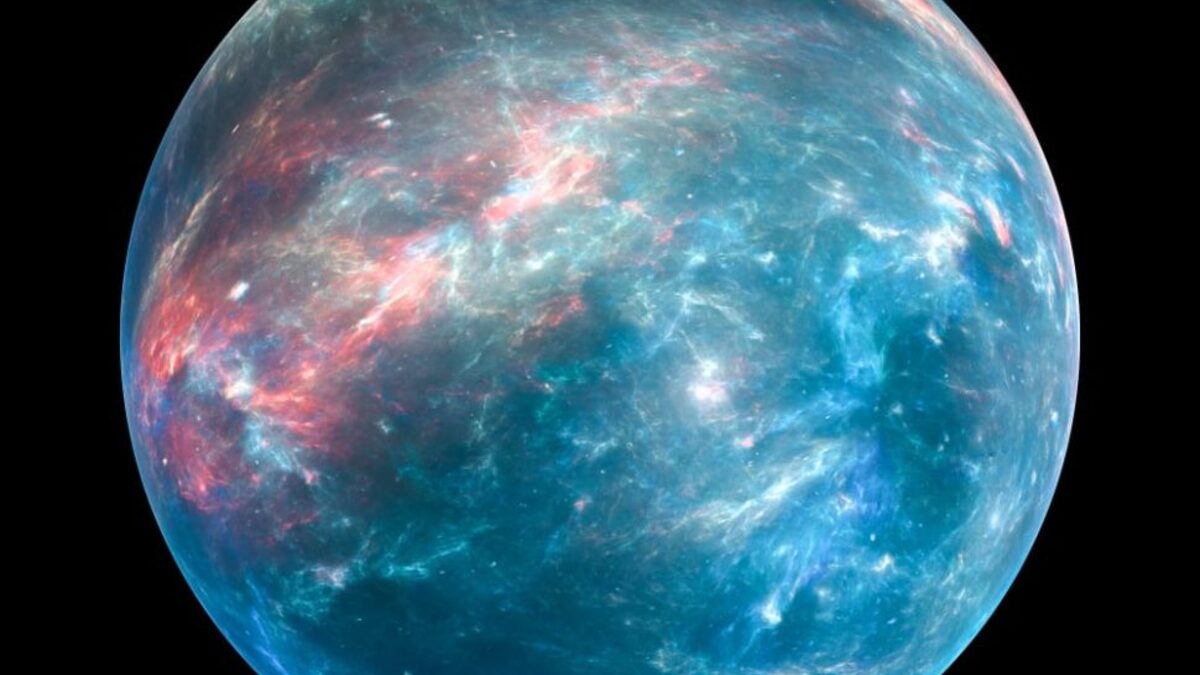An international group of collaborators, including scientists from NASA’s Jet Propulsion Laboratory and The University of New Mexico, have discovered a new, temperate sub-Neptune sized exoplanet with a 24-day orbital period orbiting a nearby M dwarf star. The recent discovery offers exciting research opportunities thanks to the planet’s substantial atmosphere, small star, and how fast… Continue reading SCIENTISTS DISCOVER A NEW EXOPLANET WITH A RIPE ATMOSPHERE
Results for "Exoplanet"
Water Vapour on the Habitable-Zone Exoplanet K2-18b
Astronomers have finally uncovered water vapour in the atmosphere of a super-Earth exoplanet orbiting within the habitable zone of its star. The find means that liquid water could also exist on the rocky world’s surface, potentially even forming a global ocean. The discovery, made with NASA’s Hubble Space Telescope, serves as the first detection of… Continue reading Water Vapour on the Habitable-Zone Exoplanet K2-18b
TURBULENT SKIES OF NEARBY FAILED STAR SPOTTED BY THICK CLOUD BANDS
Scientists have spotted evidence of Jupiter-like stripes in the thick atmosphere of a nearby brown dwarf, a new study reports — and this evidence was gathered in a novel way.
WIND SPEED OF A BROWN DWARF MEASURED FOR THE FIRST TIME
For the first time ever, astronomers have measured wind speed on a brown dwarf, or “failed star,” an object heftier than a planet but not massive enough to host the fusion reactions that power stars.
10 Interesting Facts About Earth
Alien worlds may be all the rage, with their mystique and promise, but the orb we call home, planet Earth, has all the makings for a jaw-dropping blockbuster movie: from the drama of explosive volcanoes, past meteor crashes and catastrophic collisions between rocky plates to the seeming fantasy of the ocean’s deep abysses swirling with… Continue reading 10 Interesting Facts About Earth
Could Venus Have Supported Life 700 Million Years Ago?
The hellish planet Venus may have had a perfectly habitable environment for 2 to 3 billion years after the planet formed, suggesting life would have had ample time to emerge there, according to a new study. A study presented at the EPSC-DPS Joint Meeting 2019 by Michael Way of The Goddard Institute for Space Science… Continue reading Could Venus Have Supported Life 700 Million Years Ago?
A New Class Of Super-Earths Formed From High-Temperature Condensates: HD219134 b, 55 Cnc e, WASP-47 e
Researchers at the Universities of Zurich and Cambridge have discovered a new, exotic class of planets outside our solar system. These so-called super-Earths were formed at high temperatures close to their host star and contain high quantities of calcium, aluminium and their oxides—including sapphire and ruby. Twenty-one light years away from Earth in the constellation… Continue reading A New Class Of Super-Earths Formed From High-Temperature Condensates: HD219134 b, 55 Cnc e, WASP-47 e
Detection Of A Giant Flare Displaying Quasi-Periodic Pulsations From A Pre-Main-Sequence M Star By The Next Generation Transit Survey
A massive stellar flare on a baby star has been spotted by University of Warwick astronomers, shedding light on the origins of potentially habitable exoplanets. One of the largest ever seen on a star of its type, the huge explosion of energy and plasma is around 10,000 times bigger than the largest solar flare ever… Continue reading Detection Of A Giant Flare Displaying Quasi-Periodic Pulsations From A Pre-Main-Sequence M Star By The Next Generation Transit Survey
Discovery Of A Neighboring Super-Earth In A Neighboring Star System
A team of astronomers has found strong indications of a cold super-Earth orbiting Barnard’s Star, the second closest star system to our sun. The discovery provides greater evidence for rocky worlds in our galaxy. It seems like the Super-Earth is Frozen. The frozen world is at least 3.2 times the mass of Earth and is… Continue reading Discovery Of A Neighboring Super-Earth In A Neighboring Star System
